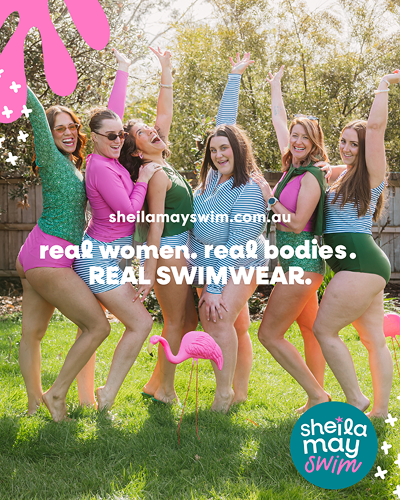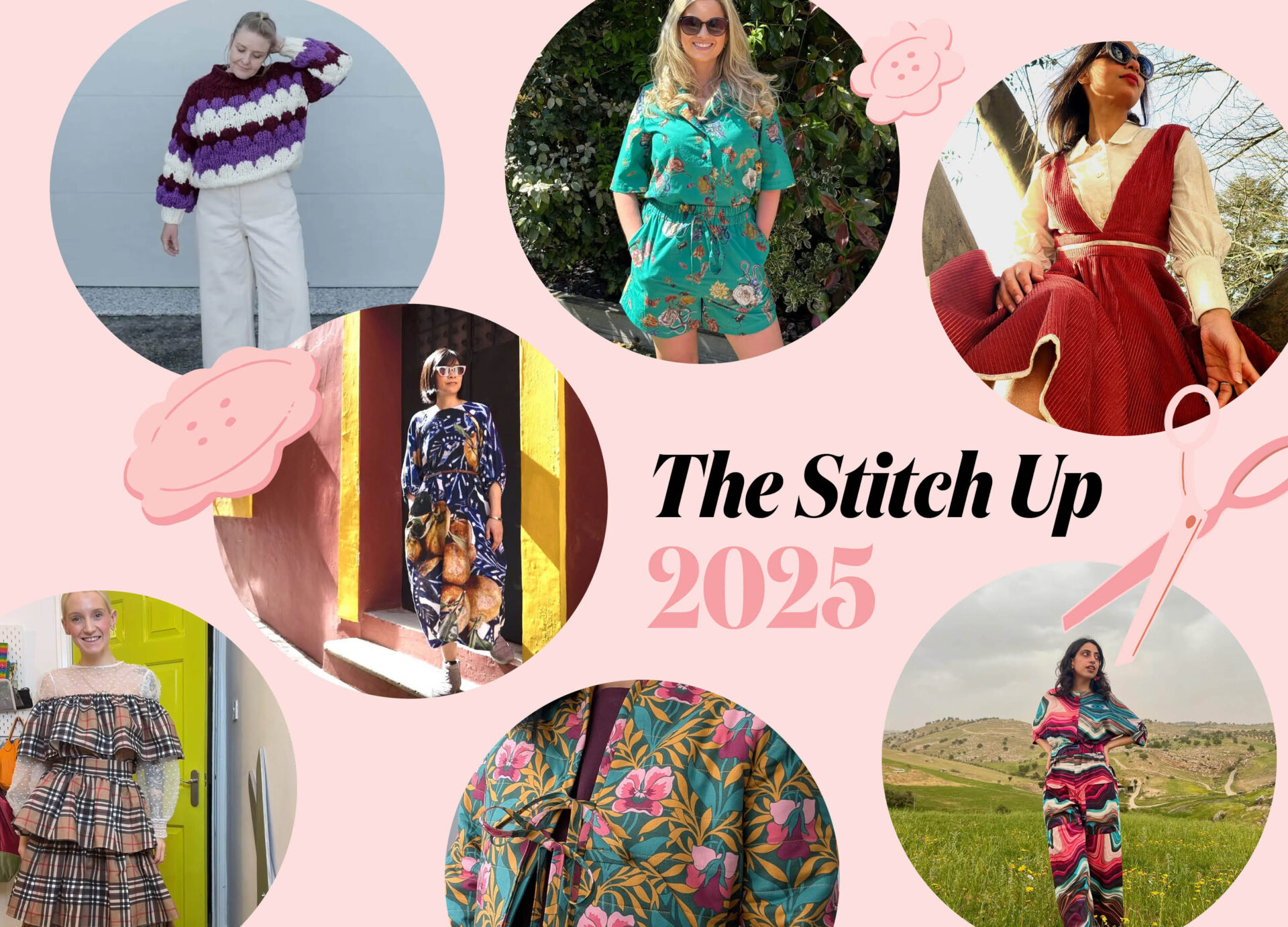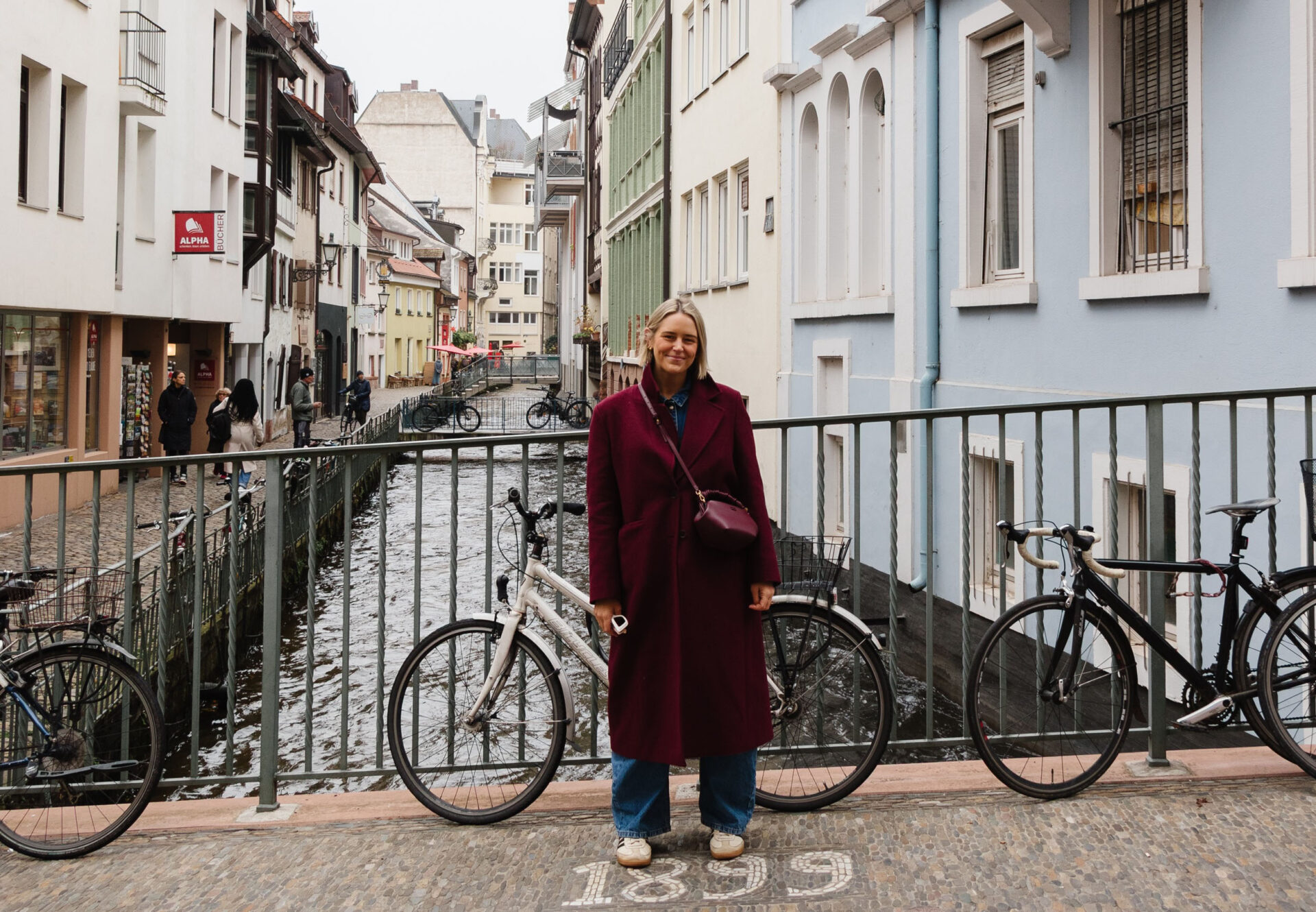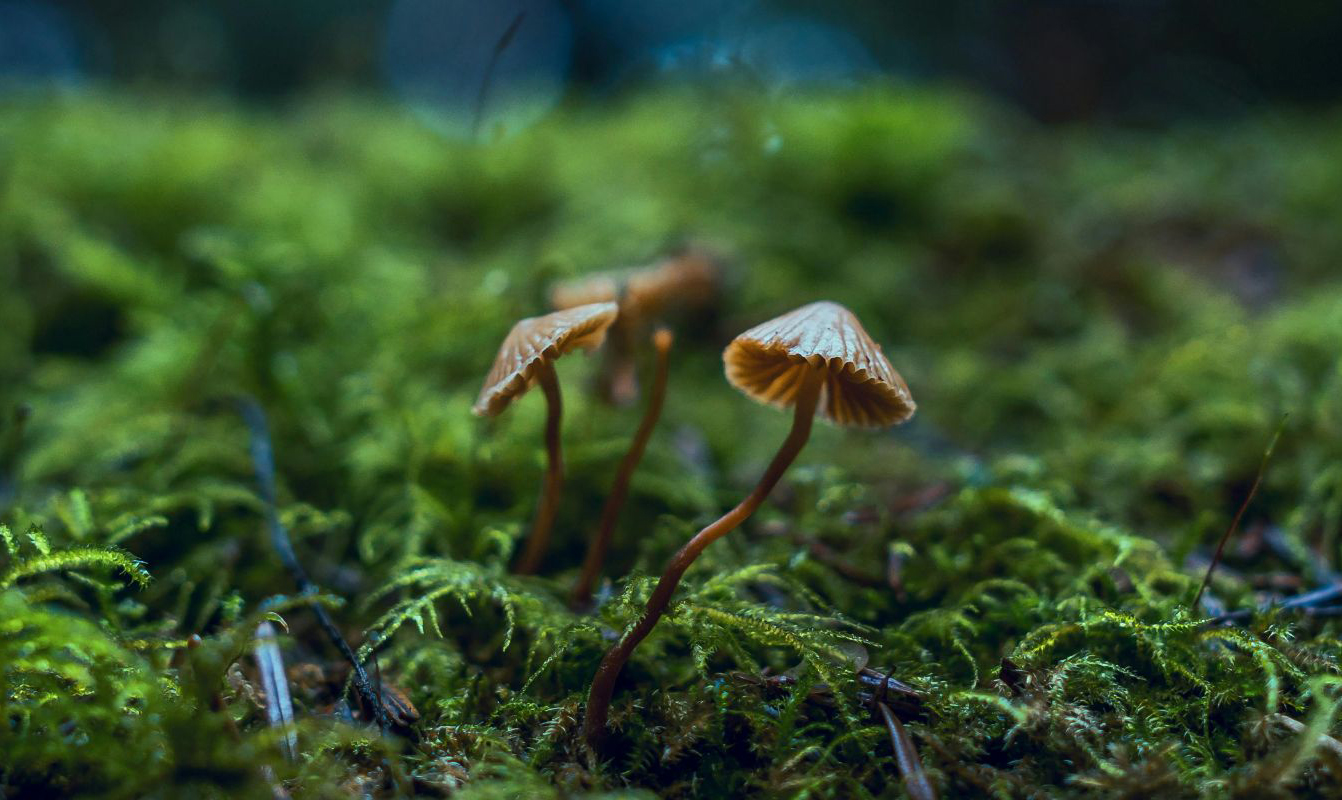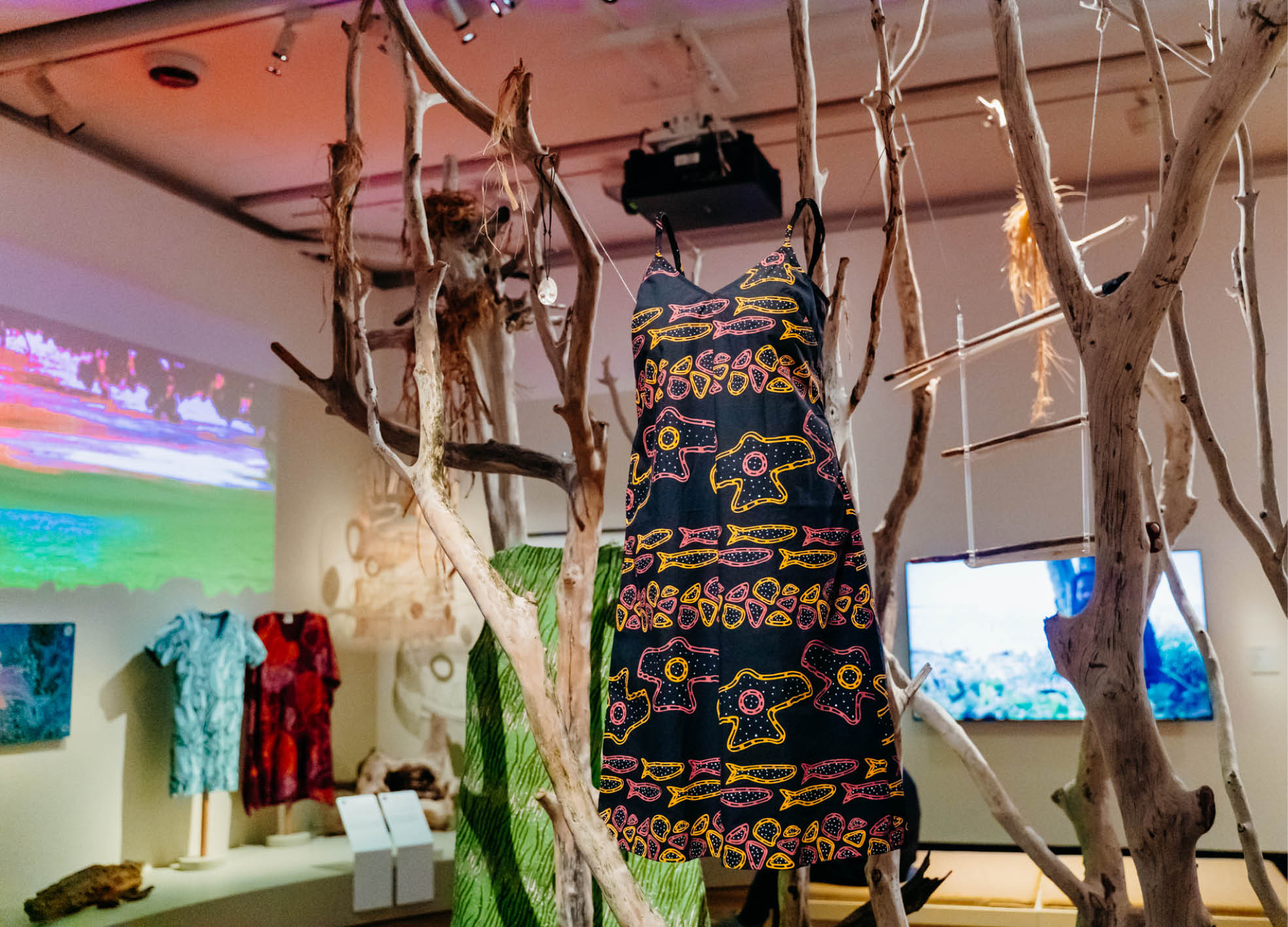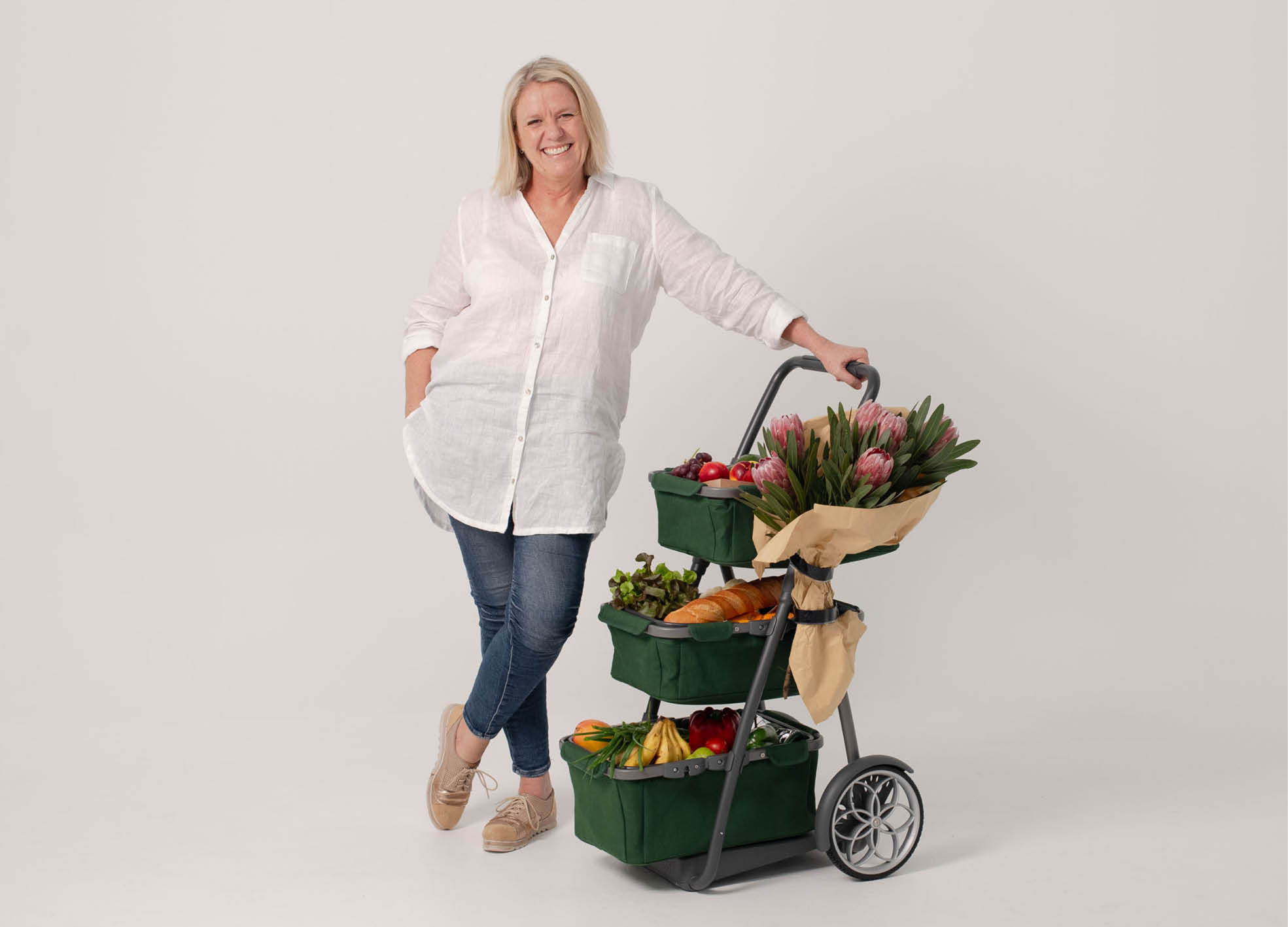Estethica 2013
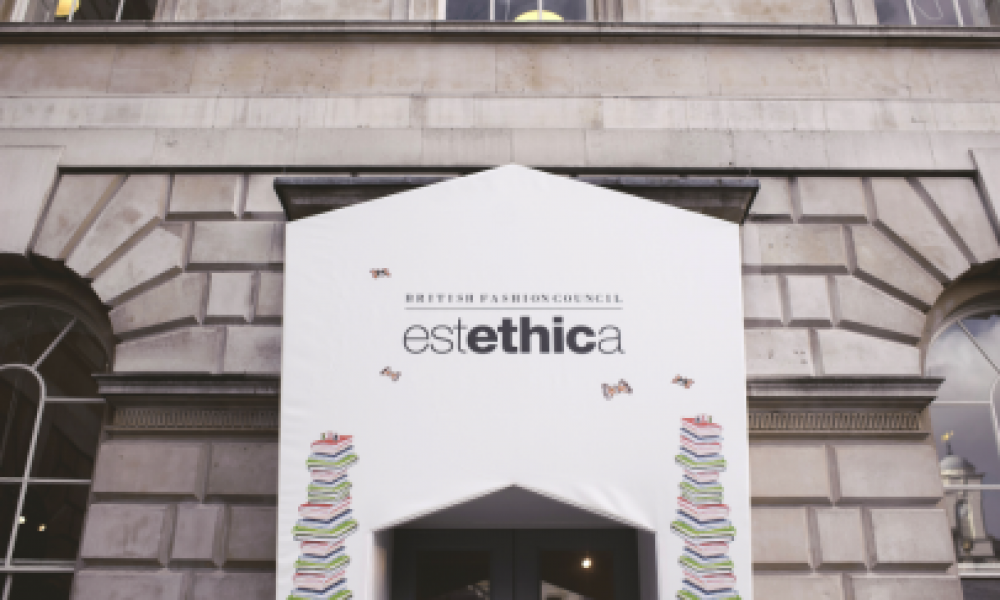
- Words by Peppermint
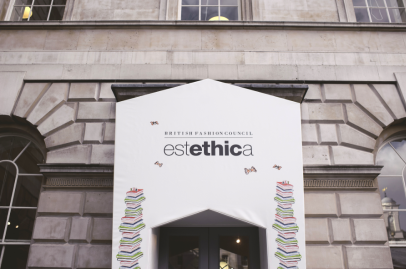

The quality of design-led eco fashion exhibited at this season’s London Fashion Week Estethica showcase was extremely high, as always. With new-on-the-scene Liora Lassalle straight out of Central St Martins, through to long term friends Goodone, who have been there from the birth of Estethica six years ago, there was a huge variety of designers, and more excitingly, clientele walking through. This platform allows sustainable fashion to be broadcast far and wide, and the industry can’t get enough. Let’s meet this season’s designers…{Words and photos by Rachel Manns}
Pachacuti
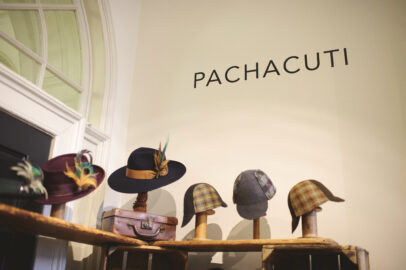

Firstly I headed over to Pachacuti whose new collection marks their 21st birthday. They’ve been a pioneer in ethical fashion since 1992, and they continue to push the standards even higher today. In 2009 they became the world’s first certified fair trade company by WTFO, and then they piloted the EU Geo Fair Trade project from 2009-2012. So these beautiful hats aren’t just pretty, they’re responsible. This collection was inspired by four diverse themes: ‘Supernova’, ‘Spiced Jazz’, ‘Peacock Revolution’ and ‘Proper Country’.
Designer Carry Somers took her inspiration for the ‘Supernova’ collection from moped helmets, aviator hats, and riding hats. It’s a modern collection of fresh shapes and cool colours, which they say will “bring a new look to winter in the city”. We loved the cool, sleek shape of this hat.
‘Spiced Jazz’ offers rich, warm colours with neat stingy-brims and sharp details perfect for making a smooth statement. Whereas ‘Peacock Revolution’ combines the dapper with the opulent, mixing deep, rich jewel colours with flamboyant feathers, hand woven Fair Trade Ecuadorian ribbons and Devon silk ribbons in “a nod to the dandies of the past.” ‘Proper Country’ provides perfect hats for prowling the countryside (or the outback) and the city too. This collection is a luxurious mix of earthy colours, natural feather trims and horsehair bands.
For the first time, Pachacuti have also designed a select range of fascinators using hand woven Ecuadorian horsehair and sprays of collected Scottish hunting estate feathers, combined with their wool felt. In addition to all the exciting new designs, they retained their famous best selling ‘Classics’ collection. The favoured fedora hats have an updated colour palate along with the ladies’ wide brim hats too.
For 2013 they’ve shared their excitement about piloting the new WFTO Fair Trade Guarantee System alongside People Tree in the UK and seven other Fair Trade organisations around the world. Pachacuti really do stand by their values and it’s extremely inspiring watching them ever strive to always do right. You can purchase Pachacuti hats here.
Ada Zanditon
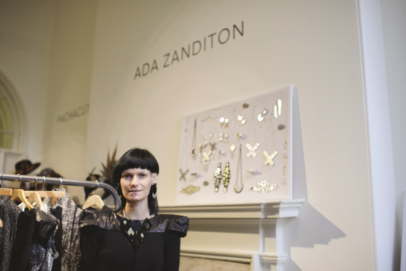

Returning this season showing off her awesome collection ‘March of the Tigress’ was the beautiful and charismatic Ada Zanditon. Sticking to her Tiger theme we saw last season, Ada aims to raise awareness of the declining numbers of tigers left in the wild due to deforestation, and she gained most of her inspiration from Tolstoy’s ‘Anna Karenina’ (one of her favourite novels). “She was such a strong vivid and amazing woman in a much harder time. Imagine her today? Just imagine if Anna just dumped all of the men and became a Tiger empress, how awesome would that be! She’d march them from the depths of the Russian winter all the way to Butan at the heart of Buddhist country.”
Ada pointed out to us that palm oil production means that the tigers are being cut off from each other into isolated pockets of land leading their numbers to dwindle. “What people don’t realise about them is that they need a lot of space. If corridors of forest land connecting those pockets back together could be re-erected and protected, then the tigers would be able to move around more freely then they would join and their numbers would rise. That’s when I got the idea of Anna Karenina marching these tigers through corridors of land.”
For the design inspiration Ada told us that she was heavily influenced by 19th century Russia. Looking at all the things the Tsars of the time wore, she then progressed the collection all the way over to Butan and Buddhism – where her alternative-ending Anna Karenina ends up.
The garments are made from a wide range of sustainable fabrics such as bamboo, organic cotton (featuring her iconic digital print), upcycled tweeds, and fair trade organic velvet. They source some of their fabric from organiccotton.biz where it is hand woven in Karela in India. Ada told us that they recently won an EFF award, and that Phil who runs it is wonderful, hard working, and is “really passionate about his workers”.
The clothes are designed in Whitechapel and constructed at ‘Acton Cut’ in London, where Ada told us is run by Margaret and Peter who are lovely and really hands on. “They care so much about the quality of the products, and Margaret sometimes cooks lunch for everyone!”
The jewellery line is a collaboration between herself and Luca Romanyi. “We met at London Fashion Week in February 2009 and realised we shared a sensibility about craftsmanship, innovative materials and geometric aesthetics.” This collection is all made in England using laser cut organic vegan tan leather & aluminium chains and rivets. They are elegant high quality contemporary pieces that are made to last, but eventually the aluminium can by recycled and the leather is biodegradable. Ada told us that “Not only have we strived to create cradle to cradle designs but we have engineered our patterns to minimise waste and we use fabric residue from the clothing collection.”
We asked Ada how she enjoying the fast pace of showing at fashion week consecutively, and she replied “It’s crazy! But in a good way. My brain is always thinking ahead. A week after fashion week and the next collection has been designed. Things keep leading on to new things and it’s moving so fast. It’s great for me, I love designing!”
When we asked her what to expect from her next collection, she had a big grin on her face and blurted out that she didn’t want to say too much! “What I can say is that I’m going somewhere completely different with it. There will be another animal! I’m not completely done with Tigers, I love them. Also, I’ll be launching a collaborative menswear brand with Nik Thakker called ‘Ada x Nik’.” Nik is the director at Nephew London and runs the widely read fashion blog ‘Karla is My Unkle’ (KARLISMYUNKLE.COM is a pop couture tastemaker blog read and recommended by Dolce & Gabanna, GQ magazine, VICE, Metro, BLAG and many more. “I’m really excited about that as it’s something entirely new to me. Nik is so inspiring, he’s the muse.”
You can shop Ada Zanditon here and from various other boutiques on her stockists page.
Phannatiq
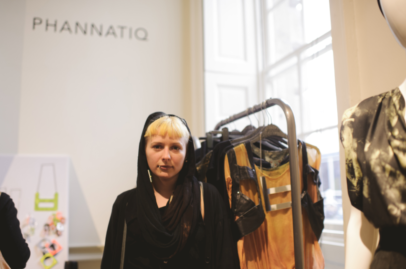
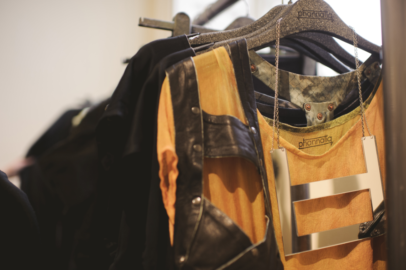
Good friends of Ada Zanditon, Phannatiq stuck a strong chord with us this season. Their AW13 collection ‘Refraction’ draws on their on going love affair with the vistas of London’s urban decay, taking inspiration from “the hi-vis, low profile people who hold our cities together”. We spoke to Anna Skodbo, creator of Phannatiq, about the new direction for cross-genre attire, classic cuts, bold shapes and sassy anti-fit. “It’s a grown up-yet-playful sartorial segue for the world’s pavement population.”
The garments this season consist of organic, unbleached fair trade bamboos, silk and cotton. Harris tweed, fig tree bark (vegan machine washable alternative to leather), recycled leather and locally felted Cotswold wool. When asked to elaborate more on the fabrics for this season Anna said “We source the cotton from the same place Ada Zanditon does. Peter cares so much, working with him is amazing. The felt was made by a local woman just up the road from me in Walthamstow here in London, which is great. The fig tree bark has come from a community project set up in Uganda to provide work for adults who have been shut out of society because of Spectrum disorders. It means a lot to be part of that.” And as for the Harris Tweed: “In order for the tweed to be officially deemed ‘Harris Tweed’ it has to be made on Harris, hand woven on a loom, in a croft by, one individual. It means it can never be produced in a factory. And it’s lovely because they have a network of people making all over the island. It’s a traditional craft that I love incorporating into the clothes.”
We also loved the colour palette used here, and were excited to find out that all the dyes this season were natural plant dyes, eliminating the majority of chemical waste from the manufacturing process. “I’ve used, chamomile, turmeric, annatto and Brazil nuts and wood. It feels great to work with natural dyes.”
Everything is designed in Walthamstow and made in London. “One local production house I use has set up a scheme to teach young people about becoming garment technicians or a machinist. I think it’s really important to teach young people to aspire to that.”
Phannatiq launched officially in February 2011, at LFW at Vauxhall Fashion Scout (now rebranded as ‘Fashion Scout’). Since then it’s had a presence in London and Paris consecutively. “When I graduated at the age at 25, I was looking around for work. I was offered paid internships set aside for graduates, but I wasn’t in the position to support myself through that. I don’t have parents to pay for things. So I decided if I’m going to be poor, I might as well be poor and do my own brand!” We asked her how the business was going… “It’s definitely a learning curve. I make my own mistakes, but I learn from them. Thankfully it’s doing well.”
Brought up within sustainable living communities, it is without uncontrived conviction that Anna implements traditional methods with no compromise on modernity. Refraction is an ethically conceived and produced collection for AW13 and we love it. You can shop Phannatiq here and here.
Lost Property of London
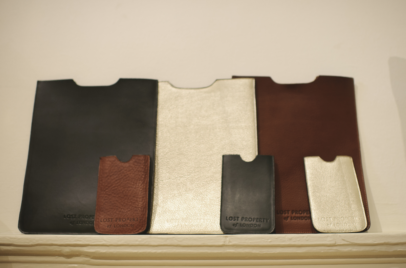

Started in 2009 by Katy Bell, Lost Property of London has evolved in to a well-established and widely recognised British accessories brand. After winning a design competition with Liberties, Katy had the platform for her eco fashion to be sold in the mainstream. Her iconic shopper bags were handmade from recycled hessian coffee sacks, and as the brand developed, so have the lines. They now incorporate vegetable tan leather, and for AW13 ‘The Maritime Collection’ they’ve introduced “sea battered, sun-beaten, salt streaked sailcloth salvaged from boat yards across the Kent coastline”.
We particularly adored the marine rope finishes and the gorgeous seaside colour palette, which we were thrilled to find out were all done with eco-friendly dyes. The products are made in a small production unit in Essex just outside of London. With a strong love of the environment fused with a great eye for design, Katy has created something special and appealing to the wider market. Rescuing abandoned fabrics underpins Lost Property of London as a brand, and we think they use it in a creative and sleek way to produce beautiful, durable, and of course responsible products. Shop Lost Property of London here and through Urban Outfitters.
Beautiful Soul

One of the brands we were most excited to view was Beautiful Soul, and their AW13 ‘I ♥ Ladybirds’ collection blew us away. The prints combined with the fabric and cut were stunning to look at and touch, and it was great to finally meet Nicola and talk about the brand and collection with her.
“For this collection I took inspiration from childhood memories, in the hope they will make you smile. This collection is inspired by my childhood memory of collecting ladybirds with my sister. The Hanna Shirt Dress, Takara Dress and Mio Dress are my favorite pieces.”
Beautiful Soul offers both a Ready-to-Wear collection ‘Beautiful Soul London’ and a bespoke ‘Kimono Collection’ for private clients. They launched a ready-to-wear collection ‘Beautiful Soul London’ in March 2011, meeting the demand internationally. The label is renowned for its unique, vibrant, signature prints, which are created each season in-house in London by Nicola and her team. “The inspiration for the prints is found in vintage kimono fabrics with an added twist of English charm.”
This collection is created from responsibly-sourced silks, British lace and end of line fabrics. Our British lace is made in Nottingham (UK). “The label is dedicated to a conscious approach to fabric sourcing, environmental impact and is committed to local, UK-based production; supporting the regeneration of UK manufacturing and textile production.”
On Estethica: “We have loved being part of Estethica. This is the first season we have shown the ready-to-wear collection here. It has changed a lot since 2010 (which is when we last participated with the Kimono Collection) and Orsola de Castro and Filippo Ricci are as passionate as ever. We have shown the “I ♥ Ladybirds” collection to some key International Buyers and Press and have also taken orders from the UK, New York and Korea.”
We asked Nicola what was next… “Well, next week we’re off to Paris Fashion Week which is exciting, and we’ve just launched our e-commerce website bringing a selection of dresses from Beautiful Soul London’s Olivia Rose Collection together. We have also just secured a number of new stockists in the UK and internationally, which is great news.”
“The Beautiful Soul London collections are stocked in high-end stores worldwide and through the brand’s own e-commerce site. We are not yet stocked in Australia or New Zealand, but we are working on this! Fingers crossed, we will be stocked in Japan for AW’13.”
Shop Beautiful Soul online here, here and here.
Liora Lassalle


Straight out of the prestigious Central St Martins emerged the incredibly talented and lovely Liora Lassalle who won the Estethica’s Re-Source competition sponsored by Veolia Environmental Services.
Veolia are a waste management company, so as you can imagine there was some serious upcycling in Liora’s latest collection. Made largely from discarded bin men’s uniforms and with the labels made from recycled cans, Liora’s managed to create a beautiful collection in her own signature style. “I attained some leftover off-cuts from Speedo and Pierre donated some denim they didn’t need, so it was great to incorporate those into the design. I also used a lot of secondhand lace to include the classic historical style I’m inspired by.”
The fabric provided to her heavily influenced Liora: “You get what you’re given and you have to work with it. I enjoyed bringing the 1800s feel to it, mixing the flamboyance and the intricate detailing of that era with the bin uniforms of today; it’s a clash of times and cultures and I’m really happy with how it’s turned out.”
As far as production goes, Liora keeps it as local as possible. “Everything is handmade in London at the Reclaim to Wear Studio and I really enjoy working from there. I’m doing another collection for September, and hopefully more after that. It’s a great space to be.”
We asked her how her time at Estethica was going. “It’s really overwhelming but it’s going so well. I’m meeting lots of exciting people so I’m excited about what it might bring.” Find Liora’s upcycled jeans here.
Rudá Rings by Janice Perez

Made from locally-sourced Brazilian hardwood and raw stones from all around the world, Janice Perez has created a spectacular modern jewellery line, which also remains timeless. Janice crafts each piece by hand from her home studio in Belo Horizonte (South Brazil) from recycled wooden furniture. “Each piece takes in between 2 – 5 days to make, and as I work with discarded furniture and raw stone each piece is unique. I work all the time and it’s hard and I’m very busy, but I really enjoy myself during that process and love making these rings.”
Starting by crafting the ring in her sketchbook, the shape of the wood and stone she’ll be using is what inspires the form of the ring. In her past collections, Janice draws her main inspiration from flowers, fish and birds. This collection she’s expanded her nature theme. “The new rings are based on waves and the ocean. What I love about them is that they look completely different depending on the angle you are observing them at, just like a wave.”
Janice started the brand five years ago and told us that in the last year it has really taken off. As her first time in London we asked how Estethica is going. “Really well, people seem excited by the rings which is great.”
Bottletop
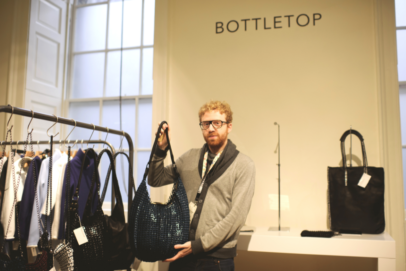

Probably one of our personal favourites this season at Estethica was Bottletop. Their sleek design is even more impressive due to the fact you can directly see the recycled items these beautiful bags are made out of; and the story behind the products is incredibly inspiring. Director of the company Oliver Wayman was there to tell it.
Bottletop began with handbags made from upcycled bottle tops in Kenya and, through a design collaboration with Mulberry, they became international best sellers. The brand then evolved and the products are now made of upcycled aluminium ring pulls collected from the streets of Brazil, where their studio is based. “At Bottletop we work together with marginalized women in one of south-eastern Brazil’s poorest communities. They receive fixed salary benefits, healthcare packages, life insurance, maternity cover and a pension for when they stop working – all of this has a huge positive impact in their community.” They have also set up The Bottletop Foundation, which supports young people through education projects in the UK, Brazil, Malawi, Rwanda, Mozambique and Kenya empowering them to take control of their lives.
The production unit consists of 12 women who originally had no other opportunities; some were even saved from prostitution. “We’ve spent a lot of time working together with them to refine the quality of the finished product. It’s taken a while, but we’re definitely getting there. We think it’s important to help these women as much as possible, as well as producing well designed high quality products.”
Other materials are natural leather sourced from south of Brazil. “We like to source everything from Brazil and it’s important to us to work with what is available locally. Another key thing for us is to make sure everything is made by hand and not machine. That produces work for our employees and that’s really important to us.”
This collection they have also begun to experiment with colour. “It’s a big transition, moving from just the silver line to enamel paint. As soon as you inject colour into the collection the possibilities are endless.” You can shop Bottletop here.
Katrien Van Hecke


Not only were Katrien Van Hecke’s Belgium-made garments beautiful in their own right just in their shapes and cuts, but it was their prints and colours that really caught our eye. We spoke to her about this collection and the process.
“I love hand dyeing. I do it all myself in my studio space with dyes made from herbs and spices. This collection I’ve used a lot of St John’s varieties and cloves mixtures.” Katrien’s other dye ingredients include basil, curry powder, natural indigo, eucalyptus, and Brazil woodand sandalwood. “I don’t want to use harsh chemicals, not only for my customers’ health benefits but also for mine.”
“I love the hand printing as well. Using seas salt and rust I can get different reactions from the fabrics and that’s really exciting.” Katrien uses a certified and approved Italian company for her silks, which are all woven there. “The Satin we use is a hemp silk mix; it’s 60% hemp and 40% silk. I love working with hemp.” She also uses recycled yarn from old woollen garments.
Before Katrien started her own label two years ago she had a strong background in the textile manufacturing industry. “I had massive job opportunities with huge companies as a skilled product technician; but in the back of my mind I was always worried about the impact of the industry. I wanted to do the opposite; I wanted to do it the right way.”
Everything is made in a abandoned police station in Belgium. Production takes place in the garage section after it’s been dyed in another part of the building. “It’s a great space to work in and offers so much potential. I do have to protect it from squatters though! I love using different parts of the building for different things. It’s such a unique space to work in.” Katrien works closely with local Belgian producers too. “Helping out the producers in Belgium may be much more expensive, but I feel it’s important to support them and keep the history of Belgium craft alive.”
This is her first time at London Fashion Week. “People need to know what they are wearing,” she says. “Sustainability in fashion could definitely be the new high fashion, just like in food with organic and fair trade, which has already excelled so much. It’s the future.”
Katrien doesn’t currently sell online but hopes to soon. Her international stockists include USA, Japan, Italy and of course Belgium. Sadly not Australia or NZ, but she’s only just getting started.
Veja


Veja is a well-established eco accessories brand based in France with all production happening in Brazil. Since its beginning in 2004, it’s evolved from just a sneaker brand to beautiful and wide range of accessories, and its policies as a company are ground breaking.
We spoke to James from Veja who gave us a lovely insight into how they run things. “We work with a co-operative of small cotton farmers that we’ve built long term dependable relationships with. We work with 36 families over there and they’ve now adopted eco methods and no pesticides or chemicals are used on the crops – meaning their personal health has rocketed. We also ensure that we pay a fair price to our farmers.” Veja use the cotton to create canvas for the shoes.
The rubber is sourced wild straight from the Amazon, but that’s a good thing. “Doing this preserves the rainforest as it adds economic value to the land and promotes sustainability.” The leather used is ecologically tanned using acacia extracts. “It’s great because it means there are no toxic metals like chrome used.”
“When it comes to our workers we have a whole social development side to the business,” he adds. Not only to they have fair trade standard working conditions in their factory in Brazil, but also in Paris after the products have been transported (mainly by boat and barge), an organisation called the ASF handles all their stock management. “We work together with the ASF in Paris to provide citizens facing drug or previous prison issues with employment.” They face social exclusion, and we think it’s wonderful that Veja are providing them with work. “We like to call it a solidarity chain. Everyone from the cotton growers in Brazil to our stock distributors in Paris benefit from our business.”
We adored the clean lines and practicality of the products, not to mention the variety of colours. Knowing that these accessories have such a huge social and environmental impact at every stage in the chain is also wonderful.
Veja are sold online and worldwide, and in Australia you can buy their products from RPM in Melbourne who currently work with them on every season.
Mich Dulce


Returning again this season is eco millenary genius Mich Dulce in all her glory. This new collection is inspired by ‘Tribal Kings and Princesses on Wild Frontiers.’ We see her signature style return in a focused monochrome palette boldly punctuated with red and yellow. Strong geometric shapes are more prevalent than ever with angular folds and crisp points replacing the softer organic silhouettes of previous seasons. It incorporates more ears, and the incredible cat-like baseball caps (amazing!) – whilst also retaining the classic iconic style she is so widely known for.
This season also saw the introduction of traditional beading techniques used by the Filipino tribe that create the hats incorporated in to some of the designs. “This season I wanted to delve a lot deeper in their roots and bring more of them into the hats,” Mich says. “This collection is partly inspired by them and their traditional dress.”
The hat’s materials are crafted from a sustainable fabrics such as ‘Piña’ which is made of pineapple fibre, and T’nalak, a handmade material using abaca fibre made by the women of the T’Boli Peoples of Lake Sebu in South Cotobato, Philippines. Then the hats themselves are made by women from the Gawad Kalinga Community Development Foundation, a Philippine-based poverty alleviation and nation building movement, who are personally trained and are supervised by Dulce who feels strongly about her work. “Traditional tinalak fabric weaving and designs have been a part of the T’Boli culture and is traditionally used for special occasions, with each design bearing a distinct meaning known only to these peoples.” Mich’s main priority is her advocacy for promoting Filipino craftsmanship and creativity through her ready to wear millinery collections using a traditional Filipino material that can be sold worldwide.
We spoke briefly about how Estethcia has been this time. “It’s been really good this year and very exciting. What I really love is that a lot of my clients don’t necessarily know that I’m an ethical brand, so it’s great to come here and show that off.”
Mich has stockists globally, and one in Australia. Head over to Pela’Studio to get your hands on one of her beautiful creations.
Goodone

Back again this season is Estethica favourites Goodone, who have been showing off their smart upcycled design for over six years. They are an award-winning independent fashion label that reflects a contemporary London feel through conscious and modern design. “We believe that an intelligent approach to design should not only satisfy a hunger for new and constantly evolving concepts in style, but should also address the environment impact of the fashion industry.”
We spoke to the awesome Nin Castle about Goodone’s work and this current collection. “We’re upcyclists; it’s why we’re here. We mix in new sustainable fabrics as well, but ultimately our goal is to try and standardise upcycling and show the industry that reusing fabric can be done on a mass-produced scale.”
Combining British wool Aran knits with certified organic cotton and end-of-roll fabrics, their garments are produced in their lovely upcycling plant in Bulgaria. “Working with the project in Bulgaria is great because we provide work whilst keeping our prices down and that appeals to the wider market.”
You can shop Goodone from a variety of stockists worldwide and online. “In Australia we’ve been working closely with Indigo Bazaar and we love it. They’re lovely.”
The North Circular
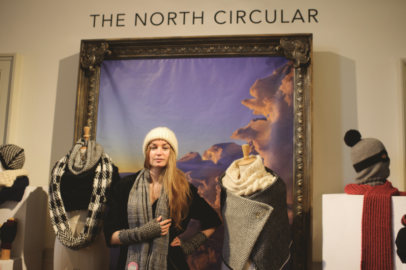
This iconic British knitwear brand started by models Lily Cole and Katherine Poulton sees contemporary knitwear exclusively made from rescued Wensleydale sheep, with the expert handknitting skills of “grannies, girls, and a few strong men”. We spoke to the beautiful Katherine from The North Circular about the collection, the process and the exciting collaboration with Greenpeace this year.
They teamed up with Greenpeace to raise awareness about the damage of climate change to the arctic. “We’ve been snapping people’s portraits against the artic backdrop and live tweeting them. Then we get them to sign up to the Greenpeace campaign. People are reacting really well.”
The North Circular’s aim is to return value to the handmade product, personalise the process of production and rekindle the relationship between the producer and the purchaser. “Each piece comes with a personal story from the knitter to the customer, which people really like. That contact between the two through the product is really touching.”
Locality is really important to this brand as well. “Our ethos is to try and keep everything as local as possible and keep our mileage low.” The low mileage also helped to seal their choice of name, as the wool passes through a 120-mile ‘north circular’ route from sheep to scourer, spinner to dyer, and then on to the knitter.
Inspired by Izzy Lane – they loved the fact that she rescues sheep from slaughterhouses and then sustains them through their wool – The North Circular’s sheep graze in England’s green pastures and the wool is spun and dyed without the use of harmful mordants. It was Izzy who alerted them to the fact that the wool industry is on its knees in the UK due to cheap overseas imports. This made them resolve to fight for bringing production back to the UK and support its homegrown industries. Every part of their garments are made the UK.
This last year has seen the brand really snowball. “Our chunky hats were commissioned by Vogue in the summer just gone, which was a great platform for us. There are now other designers approaching us wanting to collaborate, which is really exciting for us. It’s been a struggle, but we’re really moving in the right direction.”
Everything is knit to order and they ship internationally. You can shop The North Circular here.
Henrietta Ludgate
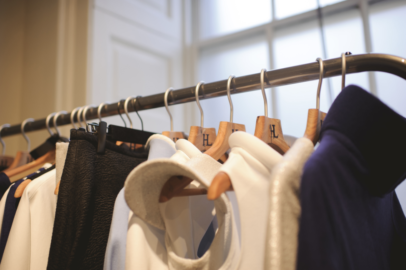
Henrietta Ludgate returns to Estethica this season with a beautiful collection showcasing her iconic piping and new incorporation of upcycled baseball caps to create some seriously awesome shoulder pads. Her shapes have caught the eye of the fashion scene worldwide, and this collection is definitely up to scratch. Henrietta told us more about it.
“In terms of the fabrics, they are all British. We use a mixture of British wool, cashmere and then a variety of upcycled leftover fabrics meaning a lot of my pieces are unique.” The piping inside the collars are a mixture of upcycled rope and millinery tubes and the necklace is a reworked curtain rope.
We loved the colours of this season’s collection, and we loved them even more when Henrietta told us that there was no dyeing process at all. “We use and re-work the fabric exactly as it comes.” This collection also saw a beautiful turquoise mini dress which Henrietta informed us was “made of upcycled lurex. We used an old fashioned knitting machine to weave it together. It took a long time but I’m so thrilled with the results. It’s one of my favourite pieces of this collection.”
Since her launch at Estethica a few years ago the brand has really changed. Growing from just selling wholesale through stockists, Henrietta now has an online store and her very own shop/studio in Bayswater in West London. “Having the shop is great, now I get to see my customers face to face. It’s really helped me to gage my demographic because I actually get to meet them!”
One of Henrietta’s biggest and most important clients is the Australian film industry guru Clare Stewart. Previously in charge of the Sydney Film Festival and now the Curator and Creative Director of the London Film Festival, Clare has wore Henrietta’s garments to Sundance Film Festival, the BAFTAs and the opening and closing of the London Film Festival. “She’s such an inspirational person, a really creative and strong woman,” says Henrietta. “And she’s fun too; she’s always the first person on the dance floor. She’s done a lot for the brand and I really appreciate it.”
When asked what was next for her, Henrietta told us: “I’ll be bringing back the bright colours like previous seasons before. This season has been quite an icy palette reflecting the highland winter. The new collection will be a lot more vibrant.” Shop Henrietta Ludgate here or here.
JOIN OUR MAILING LIST
Brighten up your inbox with our not-too-frequent emails featuring Peppermint-related news, events, competitions and more!
explore
More articles
Look, I don’t want to make anyone panic but IT’S DECEMBER!!! If you’re planning to give homemade gifts, you’re going to have to act fast. I’m a big believer that a DIY gift is the best gift of all, because…
Listen, we need to talk about December. Somewhere between the first appearance of gazillions of Mariah Carey memes prepping us for the imminent arrival of…
When you hang a painting on a wall, the story stays put. But when you wear a beautifully made garment that may as well be…
We all do it: fire up the car for a 5-minute drive to pick up groceries, drop off sewing supplies, or run a quick errand…
Hang out with us on Instagram
Sunday serving suggestion ☀️
Gorgeous photos from @JolieFemmeStore - who make sweet garments from vintage bedsheets.
#PeppermintMagazine #SlowSunday #SwitchOff #Unplug #ReadAMagazine

A toast to the old you 🥂
We wholeheartedly love this post from the brilliant @EmilyOnLife:
“2026: Reinvent, burn it down, let it go (whatever it is). Year of the Snake it up. Exercise your boundaries, exercise your body, take one teeny step every day towards a life that feels better to be in.
But don’t you dare shit on your old self while you do it.
Hold yourself with reverence and tenderness and respect, because you got you this far. You did your very best with the information and tools you had at the time. You scraped yourself together, you made it work, you survived what felt impossible to survive: again and again and again.
You are perpetually in the process of becoming, whether you can feel it or not, whether or not you add it to your 2026 to-do list.“

Some very wise words from @Damon.Gameau to take us into 2026 🙌🏼

⭐️ We made it!!! ⭐️
Happy New Year, friends. To those who smashed their goals and achieved their dreams, and to those who are crawling over the finish line hoping to never speak of this year again (and everyone else in between): we made it. However you got here is enough. Be proud.
It’s been a tough year for many of us in small business, so here’s to a better year in 2026. We’re forever grateful for all your support and are jumping for joy to still be here bringing you creativity, kindness and community.
We’re also excited to be leaping into the NY with our special release sewing pattern – the Waratah Wrap Dress!
How great are our fabulous models: @Melt.Stitches, @KatieMakesADress and @Tricky.Pockets - and also our incredible Sewing Manager @Laura_The_Maker! 🙌🏼
Ok 2026: let’s do this. 💪🏼
#PeppermintWaratahWrapDress #PeppermintPatterns #SewingPattern #MeMade #WrapDress #WrapDressPattern

Putting together our annual Stitch Up brings on all the feels! We feel humbled that you’ve chosen to sew Peppermint patterns, we feel inspired by the versions you’ve created and we feel proud of you.
Where to begin?! As always, there has been a plethora of Peppermint patterns flooding our feeds this year, and we wish we could showcase more than just a handful of magnificent makes from you, our clever community. We encourage you to flip through the me-made items in your wardrobe or scroll through your grid and remind yourself of the beauty you’ve created with your own two hands (and maybe a seam ripper and some choice words). Congratulations to all of us for our creative achievements this year!
We’ve put together some (but absolutely not all) of our favourites from 2025 over on our website. We hope it inspires your next make!
🪡 Link in bio 🪡
Pictured: @FrocksAndFrouFrou @MazzlesMakes @KatieMakesADress @_Marueli_ @IUsedToBeACurtain @Nanalevine.Couture @PiperInFullColour @MadeByMeJessieB @SarahMalkawi @Made.By.Little.Mama
#PeppermintPatterns #SewingPatterns #MeMade #MeMadeEveryday

“The ocean is a great equaliser. It doesn’t matter your age, size, background or circumstances – when you’re in the water, you’re stripped back to your essence. I’ve watched women who were terrified of the ocean walk in tentatively, then emerge with tears of joy and new-found confidence.”
For Perth photographer Amanda Battle, the deep blue has brought sisterhood and second chances. Growing up in Shoalwater Marine Park, the ocean was both her playground and sanctuary, and a balm for body and soul during challenging times. Born from her own healing journey, Amanda’s @WomenOfWaterProject, book and documentary showcases a community of women who found belonging and connection in shared experiences in the ocean.
“Every single woman arrived with her own story – grief, trauma, joy, resilience – and every single woman showed up exactly as they were in that moment. Photographing over 100 women in the ocean for the Women of Water book has been the most humbling privilege of my life.”
Discover Amanda’s work and story in ‘Saltwater salve’ in issue 64, at newsagents and stockists now!
#PeppermintMagazine #WomenOfWater #OceanTherapy #DeepBlue #OceanPhotography



